The Final Problem
The Final Problem
Media
The Final Problem
Published At August 15, 2025
Last Updated At August 27, 2025
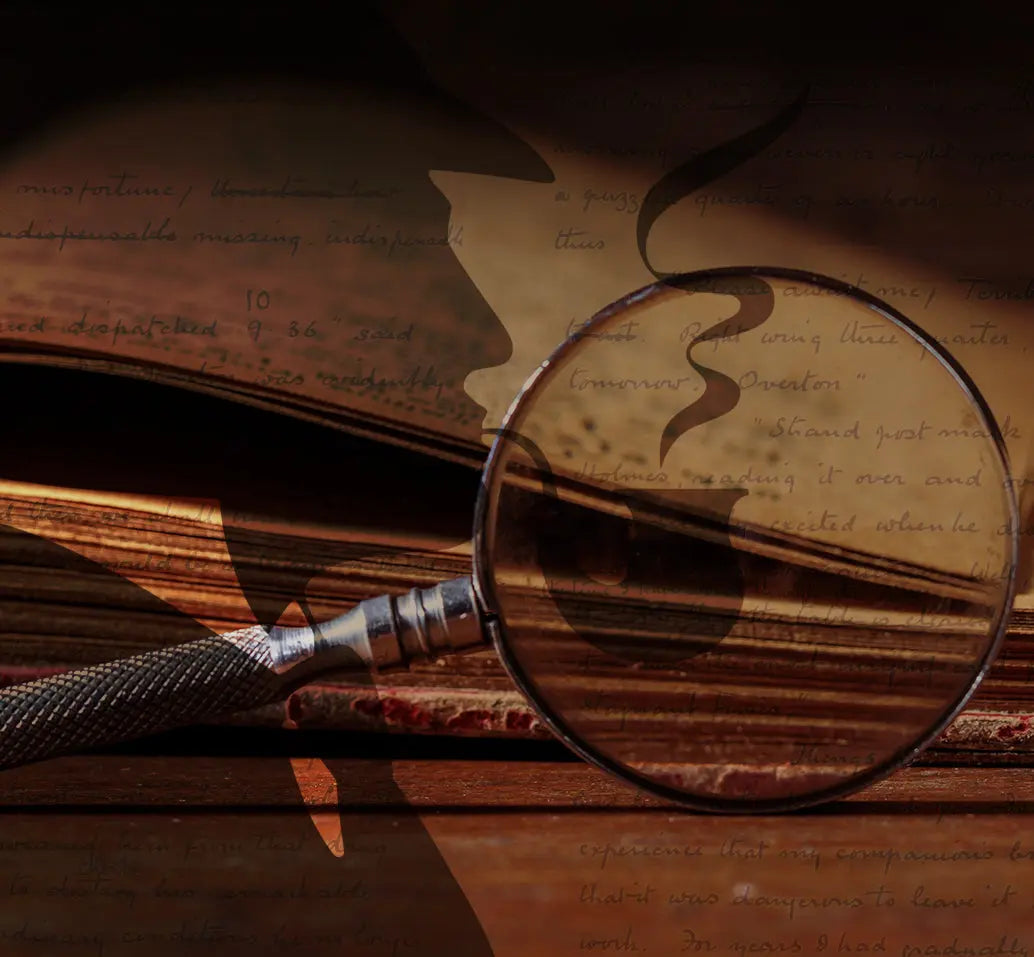
Introduction
“The Final Problem” is a short story by Sir Arthur Conan Doyle, first published in The Strand Magazine in December 1893. It chronicles the dramatic confrontation between Sherlock Holmes and his arch-nemesis, Professor James Moriarty, culminating in their struggle at the Reichenbach Falls in Switzerland. Doyle conceived the tale as Holmes’s last case, intending to retire the character at the height of his popularity. The story’s shocking conclusion provoked public outcry and inaugurated what readers later called the “Great Hiatus”, which lasted until Holmes’s return in 1903 with “The Adventure of the Empty House.”[1][2][3]
Publication History and Context
“The Final Problem” debuted in the December 1893 issue of The Strand Magazine and was subsequently collected in The Memoirs of Sherlock Holmes. Doyle had grown weary of his creation and aspired to devote himself to what he regarded as more serious historical fiction. By eliminating Holmes, he hoped to free his schedule and reputation for other literary pursuits. The move, however, shocked the reading public; many readers reportedly canceled their subscriptions to the magazine, and newspapers published letters of protest. The author himself later acknowledged the ferocity of the backlash in reminiscences and correspondence.[1][3][4][5]
Plot Summary
Holmes’s Warning and the Shadow of Moriarty
Set in 1891 (though published in 1893), the tale opens with Dr. John H. Watson describing Holmes’s unusual agitation. Holmes arrives at Watson’s practice, urgently requesting refuge. He reveals that he has at last encountered an adversary worthy of his intellect: Professor James Moriarty, a brilliant mathematician turned criminal organizer—“the Napoleon of crime.” Moriarty operates at a remove, weaving a web of agents and intermediaries who insulate him from prosecution. Holmes’s investigations, however, have uncovered enough evidence to bring Moriarty’s network to trial, provided Holmes can survive the retribution he now anticipates.[1][4]
Flight Across the Continent
Holmes persuades Watson to accompany him on a sudden departure from London. The pair leave Baker Street and cross to the Continent, eluding multiple attempts on their lives. The pursuit is relentless: at railway stations, on platforms, and through the cities of Europe. Holmes retains his composure, but Watson notes a tension in his friend—a sign of the magnitude of the threat. Ultimately, the fugitives arrive in the Swiss village of Meiringen, planning to continue to Italy after a short rest.[1]
The Lure to the Falls
While lodging at a local hotel, Watson is summoned by an urgent note requesting medical aid for a gravely ill Englishwoman. He rushes off, only to discover that the summons was a ruse—an artful stratagem designed to separate him from Holmes. Realizing the deception, Watson hurries back along the mountain path toward the Reichenbach Falls, a roaring cataract whose spray and precipices unleash both awe and dread.[1]
The Last Note and the Struggle
At the cliff’s edge, Watson finds no trace of Holmes save for a walking stick (or alpenstock) and a letter pinned beneath a stone. In this poignant message, Holmes explains that Moriarty intercepted him and insisted on a final reckoning—mind against mind, man against man—away from the interference of the law. Holmes anticipates the danger but expresses serenity in leaving behind a world where his life’s work has reached completion. Watson reconstructs the scene from footprints and scuffs: two men grappled near the brink; then the tracks end. The inference is terrible and inescapable. Both Holmes and Moriarty have vanished into the maelstrom.[1][4]
Aftermath
Watson returns to England a bereaved friend and faithful chronicler. He preserves Holmes’s papers and legacy, writes the narrative as a memorial, and hints that the detective’s success in breaking Moriarty’s organization stands as a final service to society. The story closes on an elegiac note, with Watson inviting readers to remember Holmes at his best—keen, austere, and wholly dedicated to reason and justice.[1]
Principal Characters
Sherlock Holmes
Holmes appears at once at the pinnacle of his powers and under mortal threat. His cool logic, mastery of disguise, and encyclopedic knowledge remain intact, but his vulnerability is sharpened by an opponent who understands his methods. The story adds dimensions to Holmes’s character: a willingness to sacrifice himself, a stoic acceptance of fate, and tender consideration for Watson (to whom he writes with affection and clarity).[1]
Dr. John H. Watson
Watson narrates with restrained grief. His medical training and observational competence ground the tale’s emotional force: he is both witness and interpreter, providing details about footprints, notes, and the landscape that invite the reader to deduce along with him. His devotion to Holmes is evident in his immediate decision to accompany his friend, and in the simple dignity of his closing tribute.[1][4]
Professor James Moriarty
Moriarty makes his first on-stage appearance in the Holmes canon here. Doyle sketches him as a brilliant mathematician—author of a treatise on the binomial theorem—who leveraged his intellect to mastermind a sophisticated criminal syndicate. He keeps himself aloof from direct action, “stationary” at the center of a vast web, while subordinates carry out operations. This conception created the archetype of the criminal mastermind in modern detective fiction. Though Moriarty’s direct dialogue with Holmes is brief, it crackles with mutual recognition and icy courtesy, suggesting two minds mirroring each other across a moral abyss.[1][4][6]
Major Themes and Interpretations
Genius vs. Genius
Doyle frames the conflict as a duel of equals. Where earlier antagonists fell to Holmes’s deductions, Moriarty anticipates and counters them. The symmetry is striking: both men are scholars, ascetics of a sort, and strategists; yet their ethics diverge absolutely. This structural mirroring heightens the drama and permits the story to function as a kind of intellectual tragedy, in which the only plausible end is mutual destruction—or the appearance of it.[4][6]
Rational Order and the Abyss
The landscape of the Reichenbach Falls functions as more than setting; it is a symbol of chaos at the edge of the rational world. Throughout the Holmes stories, London represents an arena where logic can be applied to tame disorder. In Switzerland, by contrast, nature’s sublime violence threatens to swallow certainty itself. There, at the brink, the champion of reason confronts a force intent on unmaking order. The result is a tableau that fuses detective fiction with the Romantic sublime.[4]
Friendship and Testimony
Watson’s narrative is a eulogy. His composure underscores the story’s ethics: duty, loyalty, and the act of bearing witness. “The Final Problem” relies on testimonial reliability—we believe Holmes died because Watson, a trusted narrator, believes it. Doyle thereby explores how communities construct truth from memory and evidence, even when direct observation (the fall itself) is lacking.[1][4]
Fame, Fatigue, and the Author’s Will
The tale also reflects Doyle’s own ambivalence toward his creation. By staging a spectacular exit, he asserts artistic control over a character who had eclipsed his other work. The resulting controversy—public mourning for a fictional detective—became a cultural phenomenon, illustrating the new power of serialized mass-market fiction to shape public sentiment.[3][5]
Narrative Technique
Watson’s Limited Point of View
The choice to have Watson absent during the decisive struggle intensifies suspense and enlarges the interpretive space for readers. Watson’s reconstruction from traces—footprints, scuff marks, a pinned letter—mirrors forensic method. The technique is economical: a few physical details invite the same inferential habits that the stories cultivate in their audience. It is forensic minimalism, aligning the reader with Watson’s grief and uncertainty.[1][4]
Epistolary Insert
Holmes’s letter—calm, graceful, and valedictory—introduces an epistolary element. It grants a glimpse of Holmes’s internal voice, rare in the canon, and lends the narrative a legalistic clarity: the letter functions almost as a deposition from the dead, fixing motive and circumstance in a document Watson can transmit to posterity.[1]
Compression and Speed
Unlike the leisurely unravelings typical of other cases, “The Final Problem” is driven by chase and imminent peril. The tempo suits a thriller while preserving Holmesian hallmarks—observation, deduction, and verbal dueling. Doyle’s control of pacing ensures that the final encounter feels both inevitable and sudden.[1][4]
The Great Hiatus and Holmes’s Return
The publication of “The Final Problem” produced a decade-long gap—the Great Hiatus (1893–1903, in publication terms). Within the fiction, the dates differ: Holmes’s fall occurs in 1891, and his return is set in 1894. The detective’s resurrection arrives in “The Adventure of the Empty House” (1903), which explains that Holmes survived Moriarty’s attack by using baritsu (Doyle’s spelling of a then-obscure martial art) to throw Moriarty into the abyss and then went into hiding to dismantle the remainder of the criminal network, including Colonel Sebastian Moran. Doyle, facing persistent public demand (and attractive pay), revived the character to enormous acclaim, inaugurating The Return of Sherlock Holmes (1905).[2][4][6]
Moriarty’s Legacy
Moriarty’s presence in the canon is brief, yet his influence is immense. He codifies the trope of the shadow genius who organizes crime at scale, a figure echoed in later literature and media. Writers and critics have debated whether Moriarty is primarily a narrative necessity—a nemesis powerful enough to end Holmes—or a fully realized character. Either way, his aura has grown through adaptation, commentary, and the Holmesian “Game,” where enthusiasts treat the canon as historical documents to be harmonized and expanded.[4][6]
Setting and the Reichenbach Falls
Geography and Symbolism
The Reichenbach Falls, near Meiringen in the Bernese Oberland, are among Switzerland’s most dramatic cascades. In the story they are approached by a narrow path along precipitous cliffs, with booming water and wind-driven spray. Doyle transforms the site into a metaphorical borderland—between life and death, order and entropy. The falls’ physical peril, the uncertain footing, and the roar that drowns out speech contribute to the scene’s stark theatricality.[1]
Commemoration
Over time the location has become a pilgrimage site for readers. Plaques, statues, and local markers commemorate the fictional event, attesting to the peculiar way literature reshapes real landscapes by overlaying them with imagined history.[5][6]
Reception and Cultural Impact
The immediate reaction to Holmes’s death was extraordinary. Contemporary reports describe widespread disappointment and, in some quarters, anger. The outcry reshaped Doyle’s career and the magazine’s fortunes, demonstrating the potent bond between serialized narrative and a mass audience. Long-term, the episode has become emblematic of how creators negotiate control over characters who achieve autonomous cultural life. The phrase “killing your hero” is now a shorthand for bold authorial decisions that challenge readers’ expectations.[3][5][6]
Adaptations and Re-tellings
Stage and Early Screen
Although the Reichenbach incident itself is not the centerpiece of all early dramatizations, the Holmes–Moriarty rivalry was enshrined on stage and then on screen, helping to crystallize Moriarty’s image (often with a cape, cane, and urbane menace).[5][6]
Television
Modern television has repeatedly revisited the story’s core beats:
- The Granada Television series with Jeremy Brett offers a relatively faithful rendition of “The Final Problem,” emphasizing psychological duel and Alpine peril.
- The BBC’s Sherlock reimagines the confrontation as “The Reichenbach Fall,” relocating the “fall” to contemporary London as a reputational and literal plunge, while preserving the theme of public testimony and deception.
- Other series echo the trope of the ultimate nemesis, even when they depart from the canonical setting, underscoring the tale’s adaptability.
These versions vary in fidelity but consistently retain the essential grammar: pursuit, a trap or stratagem to isolate the detective, and an apparent sacrifice that invites resurrection.[5][6]
Cinema
Feature films frequently stage the Reichenbach duel with kinetic spectacle—hand-to-hand combat at a precipice—while preserving the mutual respect and fatalistic calm that characterize Holmes and Moriarty’s final exchange. Even when the chronology or specifics shift, the scene’s symbolic power remains: two peerless minds confronting the void.[5][6]
Canonical Chronology
Holmesian scholarship distinguishes between publication chronology and internal chronology. Internally, the events of “The Final Problem” are placed in April–May 1891, while “The Empty House” situates Holmes’s reappearance in 1894. Externally, the stories appeared in print in 1893 and 1903, respectively. Annotators have worked to reconcile minor inconsistencies—train timetables, travel durations, and Watson’s domestic circumstances—to build a coherent timeline, a playful discipline often called “the Game.”[2][4][6]
Style, Tone, and Moral Vision
Elegy Within a Thriller
Doyle hybridizes genres: the chase narrative accelerates the plot, while Watson’s reflective tone drapes it in elegy. The language is stripped of ornament at critical junctures, which lends gravity; Holmes’s valedictory note is unadorned, dignified, and concise. The effect is classical restraint rather than melodrama, which paradoxically increases the emotional charge.[1][4]
 Holmes likens Moriarty to a spider at the web’s center—a metaphor that has become iconic. It conveys both Moriarty’s tactical patience and his alienated detachment from the crimes he profits by.
Holmes likens Moriarty to a spider at the web’s center—a metaphor that has become iconic. It conveys both Moriarty’s tactical patience and his alienated detachment from the crimes he profits by.
Justice Without Triumph
“The Final Problem” subverts the usual Holmesian cadence of problem–investigation–solution–explanation. Here, justice is achieved at a cost that defies triumphal closure. The dismantling of Moriarty’s organization is mentioned but not dramatized; the net closes offstage. The story centers not on clever revelation but on character: what it means for a rationalist hero to confront a limit he cannot elude.[1][4]
Textual Details and Motifs
The Web and the Spider
Holmes likens Moriarty to a spider at the web’s center—a metaphor that has become iconic. It conveys both Moriarty’s tactical patience and his alienated detachment from the crimes he profits by. Doyle’s economy here is notable: one image supplies an entire theory of criminal organization, anticipating later sociological models of networks and nodes.[1][4]
Letters, Notes, and Evidence
Paper—summons, telegrams, memoranda—propels action. The forged or misleading message that draws Watson away is countered by Holmes’s authentic final letter. The juxtaposition dramatizes the story’s moral axis: deception versus testimony. In a narrative obsessed with evidence, writing becomes both weapon and witness.[1]
Travel as Transformation
Flight from London to the Alps externalizes Holmes’s passage from the analytic urban milieu to a mythic arena where legend can occur. The change of setting is not mere scenery; it enables the shift from casework to fate, from procedure to sacrifice.[1][4]
Why “The Final Problem” Endures
The story is compact yet monumental, a narrative that both completes and renews the Holmesian myth. By risking closure, Doyle paradoxically enlarged the character’s afterlife; the supposed ending generated deeper affection and a stronger market for Holmes’s return. The tale also offers a template for later franchises facing character fatigue: retire the hero with grandeur, then reinvent. Finally, the duel of intellects remains arresting because it treats genius not as spectacle alone but as an ethical commitment—Holmes’s greatness is inseparable from his willingness to place himself in harm’s way for the common good.[3][5][6]
Further Reading and Study
For readers seeking richer context, annotated editions supply notes on dates, real-world locations, linguistic quirks, and Doyle’s sources. Biographies of Conan Doyle illuminate the professional pressures that shaped the decision to “kill” Holmes and the subsequent reversal. Adaptation studies trace how each era reimagines Reichenbach to reflect its anxieties—Victorian fears of hidden criminality, modern concerns about surveillance, or the perils of reputation in a networked world.[4][5][6]
Conclusion
“The Final Problem” compresses pursuit, confession, friendship, and fate into a taut narrative that changed literary history. Whether read as a tragic finale or the prelude to resurrection, it remains the definitive statement on the Holmes–Moriarty dialectic: intellect measured against intellect at the brink of the abyss. Its restraint, symbolism, and audacity continue to invite new performances, fresh scholarship, and—in the mind’s ear—the thunder of a waterfall that never quite drowns out Holmes’s calm farewell.[1][2][4]
References
- Doyle, Arthur Conan. “The Final Problem.” The Strand Magazine, December 1893; collected in The Memoirs of Sherlock Holmes. (Standard primary text.)
- Doyle, Arthur Conan. “The Adventure of the Empty House.” The Strand Magazine, 1903; collected in The Return of Sherlock Holmes (1905). (Explains Holmes’s survival and return.)
- Doyle, Arthur Conan. Memories and Adventures. Various editions (1924). (Author’s reflections on Holmes’s “death” and public reaction.)
- Klinger, Leslie S., ed. The New Annotated Sherlock Holmes. W. W. Norton, 2004–2005. (Annotations on chronology, geography, and textual detail.)
- Baring-Gould, William S., ed. The Annotated Sherlock Holmes. Clarkson N. Potter, 1967. (Classic notes and background; influential in Holmesian scholarship.)
- Lycett, Andrew. Conan Doyle: The Man Who Created Sherlock Holmes. Free Press, 2007. (Biography offering context for Doyle’s career decisions and the Great Hiatus.)
Learn about The Final Problem, the dramatic story of Holmes's clash with Moriarty.
FAQ
Information
Related Articles
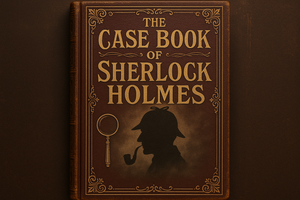
The Case Book of Sherlock Holmes
The Final Collection Introduction The Case-Book of Sherlock Holmes, published in 1927, is the la...

The Return of Sherlock Holmes
The Great Detective Resurrected Introduction The Return of Sherlock Holmes, published in 1905, i...
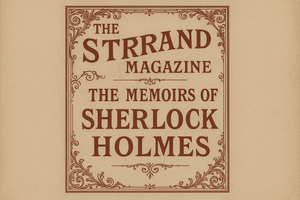
The Memoirs of Sherlock Holmes
The Detective’s Fateful Adventures Introduction The Memoirs of Sherlock Holmes, published in 189...
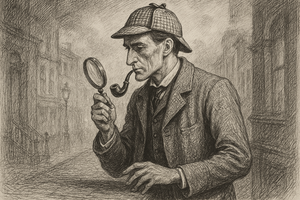
The Adventures of Sherlock Holmes
The First Collection of Short Stories Introduction The Adventures of Sherlock Holmes, published ...

Sherlock Holmes
The World’s Greatest Detective Introduction Sherlock Holmes, the fictional detective created by S...
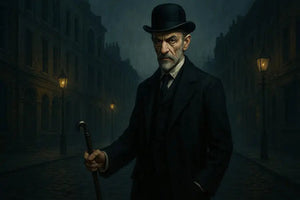
Professor James Moriarty
The Napoleon of Crime Introduction Professor James Moriarty is the arch-nemesis of Sherlock Holme...

Mrs. Hudson
The Landlady of 221B Baker Street Overview Mrs. Hudson is the patient and loyal landlady of 221B ...
The Final Problem (1893) is Sir Arthur Conan Doyle’s dramatic story where Sherlock Holmes faces his nemesis, Professor Moriarty, at the Reichenbach Falls.
Intended as Holmes’s last case, the tale shocked readers and sparked the famous “Great Hiatus” until Holmes’s return in 1903.
The story symbolizes the ultimate clash of intellects, portraying Holmes and Moriarty as mirror opposites locked in fatal combat.
Its legacy endures through adaptations, scholarship, and the Reichenbach Falls’ status as a literary landmark.
